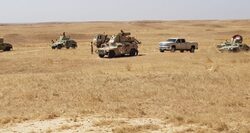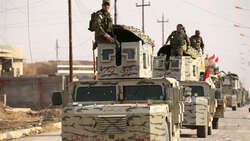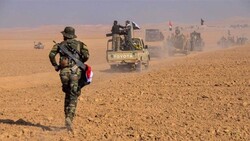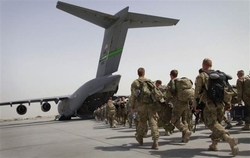Who is the "destroyer" – ISIS leader that Washington has declared dead?
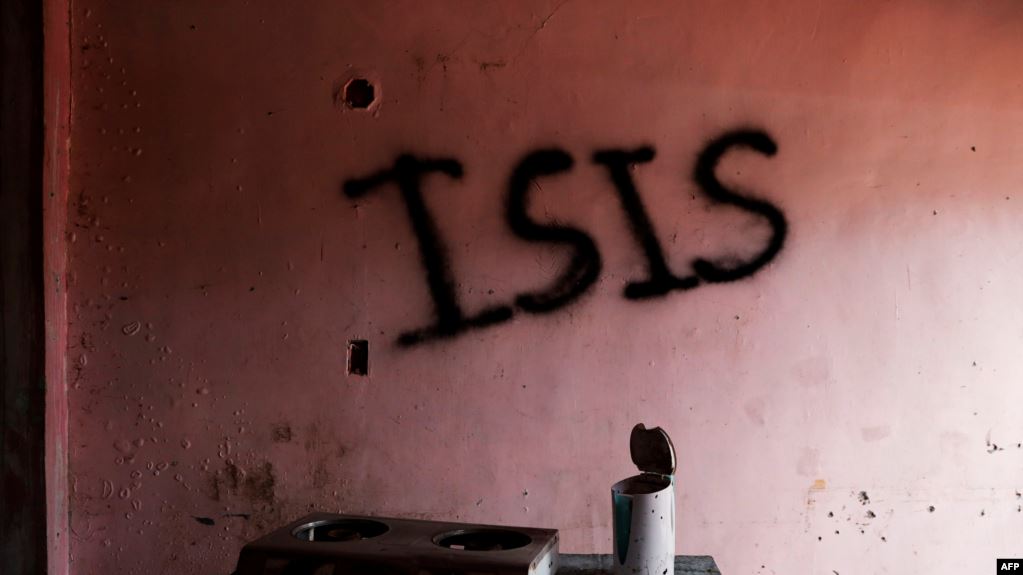
Shafaq News / U.S. President Joe Biden announced today, Thursday, that ISIS leader Abu Ibrahim al-Hashimi al-Qurayshi was killed in a U.S. raid in northwestern Syria.
Biden said in a White House statement, "Last night at my direction, U.S. military forces in northwest Syria successfully undertook a counterterrorism operation to protect the American people and our allies, and make the world a safer place."
"Thanks to the skill and bravery of our armed forces, we have taken off the battlefield Abu Ibrahim al-Hashimi al-Qurayshi – the leader of ISIS," he added, "All Americans have returned safely from the operations. I will deliver remarks to the American people later today."
Who is al-Qurayshi?
His full name is Amir Mohammed Saeed Abdul Rahman Al-Mawla, and he bears several pseudonyms. ISIS presents him as the "Emir" Abu Ibrahim al-Hashimi al-Qurayshi, seeking to consolidate his power by rebuilding ISIS, which is still able to move despite losing the areas it once controlled.
Al-Mawla was assigned at the end of October 2019 by the Islamic State leadership to succeed Abu Bakr al-Baghdadi, who was also killed in a U.S. attack.
The world's most wanted "terrorists"
The path that brought this man of Turkmen origin, probably born in 1976, to the leadership seems unclear within an organization whose former leaders were Arabs, and of the de facto Hashmi Qureshi lineage, whose name was not a title to cover his origins, which prompted the United Nations to point out in a January 2020 report that it was "a temporary option, until the organization finds a 'prince' with greater legitimacy".
On March 24, the U.S. State Department officially designated Al-Mawla, alias Al-Qurayshi, as the new leader of ISIS and listed him as the world's most wanted "terrorist".
The U.S. Bucca prison
Al-Mawla was a former officer of Saddam Hussein's army and a graduate of Islamic sciences from Mosul University. According to the " Counter-Extremism Project " research center, he joined al-Qaeda shortly after the U.S. invasion of Iraq in 2003, according to the "Counter-Extremism Project" research center.
He was imprisoned in 2004 in the American Prison of Bucca, once considered a breeding ground for jihadist ideology, where he met al-Baghdadi.
After being released for unknown reasons, he joined his prison colleague, who in 2010 took control of the Iraqi branch of al-Qaeda, before establishing ISIS.
According to the same research center, "Al-Mawla quickly ascended to the leadership ranks of the organization, and was nicknamed the "Professor" and the"Destroyer", and gained the reputation of the savage man, especially by eliminating the prince's opponents within ISIS.
Under his rule, his hometown, Tal Afar, about 70 kilometers from Mosul, the largest city in northern Iraq's Nineveh governorate, has witnessed a surge in explosives factories and planning rooms for attacks.
liquidation of the Yazidi minority
"In addition to his responsibilities within that collective terrorist framework, he played a major role in the campaign to liquidate the Yazidi minority through massacres, displacement, and captivity," jihadist specialists said.
Furthermore, Al-Mawla sought to revive the golden age of ISIS (2014-2019), exploiting the decline in U.S. commitment in the region.
In recent months, ISIS has launched violent attacks in Iraq and Syria, raising fears of ISIS resurgence in the region.
